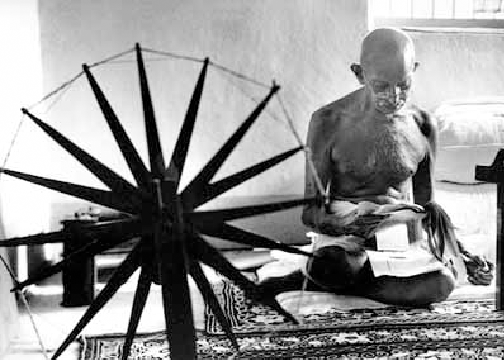During this past week, I tried to focus on researching the origin of certain well-known folk crafts. I made some very interesting connections between the arts and crafts movement throughout different societies as well as discovered a few stark contrasts.
I am most excited about discovering the origins of Harris Tweed and how it affected the people of the Hebrides and the textile economy of Scotland as a whole. Interestingly enough, I was pointed towards this history while reading a section on the Gandhian Khadi movement in India. Gandhi cited the Duchess of Sutherlands generosity in giving people of the Hebrides spinning wheels in order to provide them with some form of economic stability.

I found some writings by Angus MacLeod, a native of the island of Lewis in the Hebrides, where he detailed the early history of tweed, it’s evolution into Harris Tweed, and the growth of demand and production. It seems that tweed was a textile common among the West of both Ireland and Scotland; it was simply the fabric that people made out of what they had. It wasn’t until around the famine of 1846 that tweed was promoted as a good for exportation. As demand for tweed grew, the landowners of the parish continued to push for mills, trademarks, and an overall wider range of production for the good. Upon reading further on the subject and having a bit of background knowledge on the landlord/tenant relationship of Scotland, I have a slight hunch that the ‘generosity’ of the good Duchess as well as the rest of the promoters of the craft may have been a bit more self-serving.
MacLeod writes that oftentimes the islanders were too poor to pay merchants in monetary currency and that they would trade agriculture for rights to inhabit a certain plot of land. To me, it makes sense that the island landlords would do what was in their power to ensure that their tenants were producing profit in any form they could. It also presents a situation were tenants could easily be taken advantage of. I am unsure of how much documentation of the exact economics of the trade there is, but I can see an easy opportunity for the landlords to demand tweed as payment for rent, and then upcharge it due to the trademarking and high demand. This is going to be something I plan to continue looking into until I can hopefully determine exactly who was benefitting the most off of the growth of the industry.

I did notice a theme while looking into this subject – survivors of native cultures living in remote areas, usually the last native language speakers of a certain colonized piece of land, practiced folk crafts as part of their everyday lives. Eventually, a member of the upper class “outside” world would notice the intricacy of the craft and see an opportunity for business. In Scotland, it was British landowners, in Ireland it was protestant academics, and in Ecuador it was Western tourists. Each culture seems to have a different history in the way that they conduct business, however it’s pretty intriguing to see that they have a similar start.
Next week I will be looking at wool and wool crafts specifically, so I hope to look further into how they’ve been used and marketed throughout history.